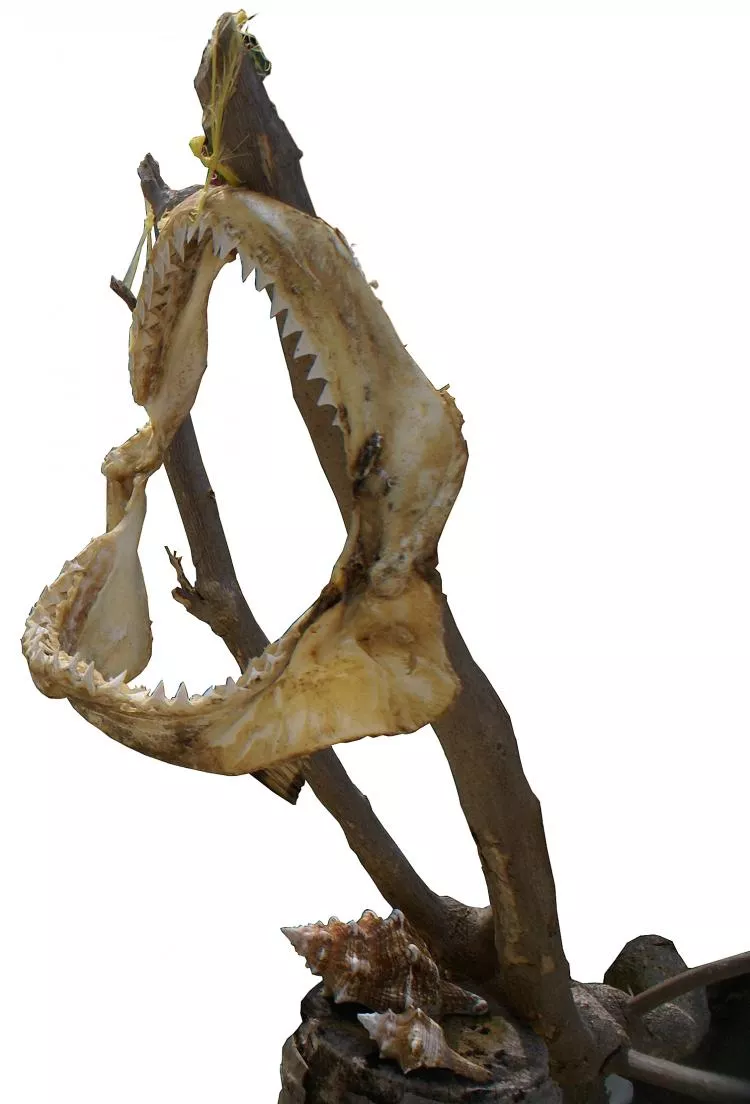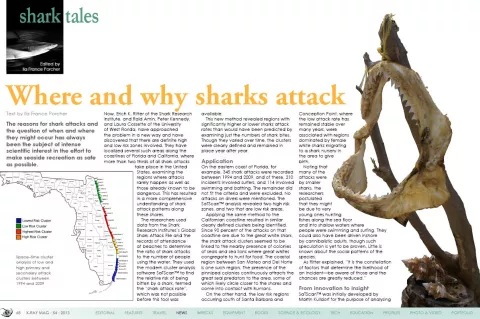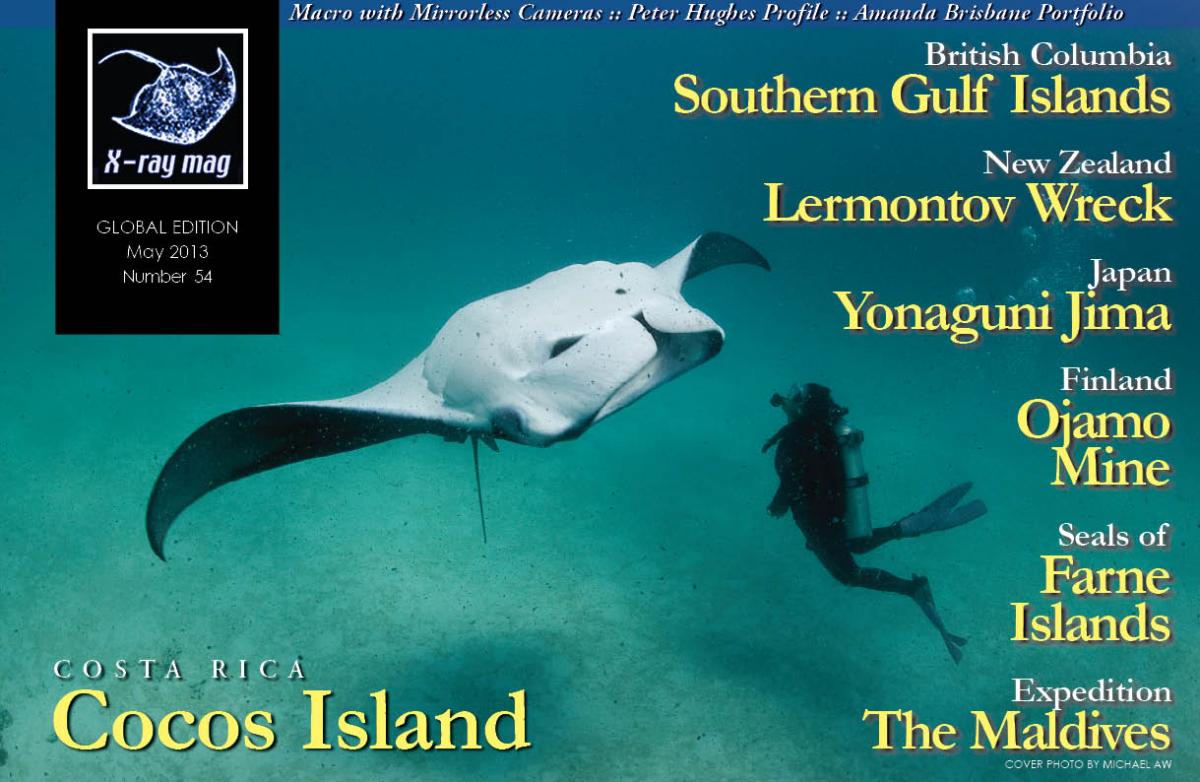The reasons for shark attacks and the question of when and where they might occur has always been the subject of intense scientific interest in the effort to make seaside recreation as safe as possible.
Now, Erich K. Ritter of the Shark Research Institute, and Raid Amin, Peter Kennedy, and Laura Cossette of the University of West Florida, have approached the problem in a new way and have discovered that there are definite high and low risk zones involved.
Contributed by
Factfile
SOURCES:
R. Amin, E. Ritter, and P. Kennedy. A Geospatial Analysis of Shark Attack Rates for the East Coast of Florida: 1994–2009. Marine and Freshwater Behaviour and Physiology. www.tandfonline.com/doi/abs/10.1080/10236244.2012.715742
R. Amin, E. Ritter, and L. Cossette. A Geospatial Analysis of Shark Attack Rates for the Coast of California : 1994 - 2010. Journal of Environment and Ecology. www.macrothink.org/journal/index.php/jee/article/view/2700/2485
They have localized several such areas along the coastlines of Florida and California, where more than two thirds of all shark attacks take place in the United States, examining the regions where attacks rarely happen as well as those already known to be dangerous. This has resulted in a more comprehensive understanding of shark attack patterns along these shores.
The researchers used data from the Shark Research Institutes’s Global Shark Attack File and the records of attendance at beaches to determine the ratio of shark attacks to the number of people using the water. They used the modern cluster analysis software SaTScan™ to find the relative risk of being bitten by a shark, termed the “shark attack rate”, which was not possible before this tool was available.
This new method revealed regions with significantly higher or lower sharks attack rates than would have been predicted by examining just the numbers of shark bites. Though they varied over time, the clusters were clearly defined and remained in place year after year.
Application
On the eastern coast of Florida, for example, 345 shark attacks were recorded between 1994 and 2009, and of these, 210 incidents involved surfers, and 114 involved swimming and bathing. The remainder did not fit the criteria and were excluded. No attacks on divers were mentioned. The SaTScan™ analysis revealed two high-risk zones, and two that are low-risk areas.
Applying the same method to the Californian coastline resulted in similar clearly defined clusters being identified. Since 90 percent of the attacks on that coastline are due to the great white shark, the shark attack clusters seemed to be linked to the nearby presence of colonies of seals and sea lions where great whites congregate to hunt for food. The coastal region between San Mateo and Del Norte is one such region. The presence of the pinniped colonies continuously attracts the great seal predators to the area, some of which likely circle closer to the shores and come into contact with humans.
On the other hand, the low-risk regions occurring south of Santa Barbara and Conception Point, where the low attack rate has remained stable over many years, were associated with regions dominated by female white sharks migrating to a shark nursery in the area to give birth.
Noting that many of the attacks were by smaller sharks, the researchers postulated that they might be due to very young ones hunting fishes along the seafloor and into shallow waters where people were swimming and surfing. They could also have been driven inshore by cannibalistic adults, though such speculation is yet to be proven. Little is known about the social patterns of the species.
As Ritter explained, “It is the constellation of factors that determine the likelihood of an incident—be aware of those and the chances are greatly reduced.”
From innovation to insight
SaTScan™ was initially developed by Martin Kulldorf for the purpose of analysing outbreaks of diseases to see whether they are random or not, and to evaluate them geographically and over time. The software can also be applied in other fields of research, but this is the first instance of it being used to generate information about the likelihood of being bitten by a shark.
Sharks travel widely under the influence of a variety of factors that include food sources, reproductive cycle, migratory patterns, and more that are unknown. So the reasons behind such clusters remain obscure.
But now that the shark attack rates for these coastlines have been established, beachgoers looking for the safest places to swim and surf have definite information on which to base their decision at last. ■





























